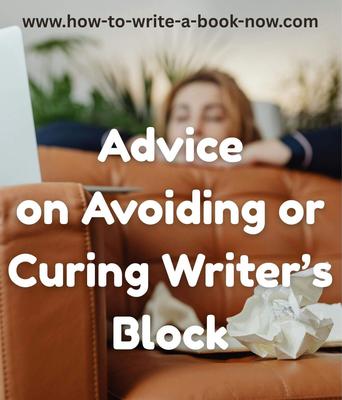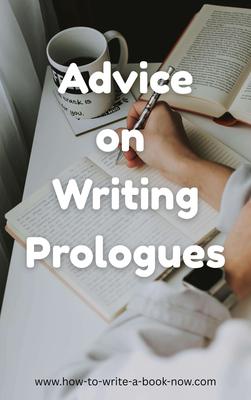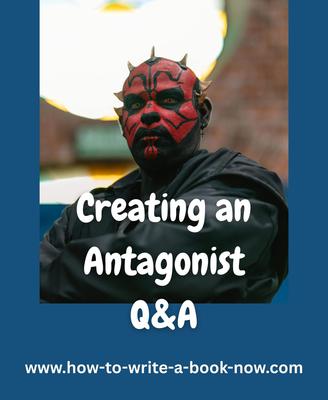Rules Regarding Filler in a Story
by Paige
Question: What is the right way to do filler material in a story?
Lots of the middle of my story would technically be classified as 'filler', being that most of the characters, settings and circumstances introduced during that time do not return to the story later in the plot, and some overall do not affect the story very much.
The important thing to note is that I feel I had reason in introducing these parts of the book- they were not added simply to make the book longer or to fill in gaps between points on the through-lines.
I feel that each of the 'filler' chapters helps to define and flesh out the world and illustrate things that have been mentioned in it. Even if the characters that are introduced are never seen or heard from again, many of them leave lasting effects on the main characters or affect how they develop as a character, as well as illustrating flaws or acting as foils. Does it matter that the characters never return or may not directly affect the plot at all?
I feel that I've adequately used the filler chapters for character, plot and world-building, so they shouldn't feel cheap to the reader. I was wondering, do you have a set of rules or guidelines pertaining to filler material in a story? I'm fairly confident that I have handled them well- but I'm very interested to hear your input.
And thank you! This is my go-to novel website.
Answer: Anything you can honestly call "filler" should be cut. That's the plain and simple truth. However, I'm not sure if all the material you are referring to is filler.
The definition of filler is material that is not integral to the reader's appreciation of the story's meaning. It is material that is not part of a story arc, whether that is the overall plot, the main character's growth, or the other throughlines.
You can also have events
And you can have subplots that explore other aspects of theme and character that fill in holes for the reader.
What you have to ask yourself is whether leaving any of this material out would weaken or strengthen the story. Often you will find that removing "filler" makes the story flow better and holds the reader's interest better. In other cases, cutting something may leave a hole in the story in which the reader no longer understands why something happens or feels the characters' actions are no longer justified (so that the characters seem more two-dimensional).
Most importantly, no part of your story should ever feel like filler. By the end, it should seem like every part is essential to the reader's complete appreciation of the story's meaning.
Another way you can assess the importance of a scene is to look at what arc or throughline it fits into. Each plot or character event should be a stepping stone in an arc, without which the arc would be discontinuous.
Theme events are a little different. A theme event should be like a stone placed on one side of a scale. You want to tip the scales in a way that delivers the message you want (e.g. X is better than Y) without being heavy-handed. If removing a theme-event will have no effect on the thematic message, then you should probably go ahead and remove it. On the other hand, if removing a theme event will alter the balance of the message the wrong way, then it should stay (or possibly be replaced with an event that does the same job but more efficiently).
Finally, with events that are designed to illustrate part of your story world but feel a bit like filler, you might see if the illustration can be incorporated into another scene that is more integral to the plot.
Comments for Rules Regarding Filler in a Story
|
||
|
||
|
||
|
||
|
||
|
||
Between Significant Events in a Story?
by Ana
(England)
Question: How do you fill in time between significant events in a story? I have seen in this website that you should not use fillers to fill in time but without them I feel like I would be missing out a few weeks of my plot. Each day is essential to showing my characters progress as she gets over losing her mum but the significant events are further apart. How do I fill in the time?
Answer: Not every event in a novel must be part of the overall story arc, but every event in the novel should be part of a story arc.
You may have a number of different arcs or throughlines in a novel. Dramatica describes the four major throughlines as...
1. The Overall Throughline: concerning the pursuit of the story goal.
2. The Main Character Throughline: concerning the main character's inner conflict, how it develops and is resolved.
3. The Impact Character Throughline: concerning how the impact character influences the main character, pressuring him/her to change.
4. The Relationship Throughline: concerning how the relationship between the main and impact characters evolves.
If you have multiple point-of-view characters, each of them may also have his/her own arc. You may also have subplots that explore thematic issues through minor character relationships. These may have their own arcs as well.
So lots can happen between events in your overall plot, but what you don't want are sections in which nothing happens.
Calling a section "filler" implies it is a section in which nothing of any significance occurs. Filler is material that has no value, that adds nothing worthwhile to the story, and that is simply being used to fill up enough pages to make a story long enough to be considered a novel.
Such material should simply be cut because it will likely bore the readers, who will sense on some level that it is not important, and therefore not worth reading.
It could be that, in your story, the arc concerning how the main character resolves her grief over her mother's death is central to the story -- perhaps the way she resolves it determines how the overall throughline is resolved. If so, that is an important arc that should be retained because it will add an important dimension to the story.
However, only the significant events (turning points) within this arc need to be told as scenes, whether they occur daily or less frequently. Anything that happens in between that does not represent a significant change or development can be told through narrative summary. For instance, you would not waste pages narrating the hours a character spends sleeping -- unless something significant happens during one particular sleep, such as a dream that gives her a new realization that sends her in a new direction.
Of course, you have to use your judgement in deciding what events are part of each arc and should be included as scenes and what can be summarized. The important thing is that the story should have narrative drive. The reader should feel that each scene is a significant event that leaves them wanting to know what will happen next. (What will the character do? What decision will the character make? What will happen as a result of the event that just occurred?)
If you feel that each day includes an important stepping stone in your character's arc, then include those events. But a scene that feels like mere filler is a waste of paper.
Never worry about "filling in the time." If nothing important happens to your characters during a block of time (whether it is a few hours or a few years), simply jump ahead to the next significant event in the arc. Maybe put in a few sentences or a couple of paragraphs of summary to set the stage for the next event. But leave out all the insignificant nothings that happen in between.
Comments for Between Significant Events in a Story?
|
||
|
||
|
||
|
||
|
||
|
||
|
||
"Filler" Chapters and current length.
by JL
Hi Glen,
I'm currently writing a high fantasy book and I'm on the third chapter. So far, with a prologue and chapters 1 and 2 completed, I have about 16,000 words. Is this a good length so far? Is it too short? Too long? I read that by the end of an average book I should have about 80,000 words, but I have a hard time estimating if I'm on right track as I have never completed a book.
My other question is regarding filler chapters and speed of the plot. I feel like, with all the planning I have done (planning was an achievement because I am largely a pantser), the story isn't really getting a break. The story starts in media res, and the inciting event is not subtle, at least not on the plot level. What follows in chapter 2 I meant to be an exposition chapter, but again, things start to act up out of the ordinary by the end of it. Looking at my notes, chapters 3 and 4 are a "settle down, we gotta think things clearly for a moment" chapter, and an "Oh no" chapter respectively, even though the former has a "wtf" moment at the end too. Here's where I started to feel like I was moving a little fast, after chapter 5, which is an action-packed chapter as well, Act 1 is over and the interlude comes in, which is slower-paced, but it isn't a "resting" section either. Isn't Act 1 supposed to have more than 5 chapters?
Should I add filler chapters in? Maybe ones that world-build and flesh out the characters more to slow things down a bit? Obviously, I still have Acts 2 through 4 to do this, but I feel like Act 1, which is meant for exposition and preparation for the rising action (at least in my understanding), has a lot going on and the characters aren't getting time to breathe.
Answer: Your target of 80,000 words is reasonable for a first novel. High fantasy books can be a little longer than that on average because they have more description of the fantasy world. As long as that world is fascinating, the extra length is not a problem.
Chapter lengths vary. What matters is that each chapter contains an event and leaves the reader hungry for more. (So it sounds like you are on the right track.) As with short stories, a chapter should probably be under 7,500 words, and possibly half that.
Nothing in your novel should feel like "filler." Every chapter should be important to the story. However, that doesn't mean that every chapter should be focused exclusively on the main plot (or overall throughlines). You may have several throughlines and subplots in the story. There should be arcs for the main character's inner conflict, the impact character, and their relationship. Other relationships or themes may be developed in subplots. You may have more than one point-of-view character. You may provide a key piece of backstory in a flashback, etc.
The trick is how you braid these various throughlines into one story, and that may mean having a chapter concerning one throughline followed by a chapter concerning another, etc. But none of them should feel like filler. They should all be part of one of your dramatic arcs, so that the reader wants to find out what will happen next.
One benefit is that the reader gets an emotional break from one throughline while they explore a different type of emotion in another.
A more important benefit is that a little time spent exploring characters and their relationships gives you a chance to develop the emotional depth of the story. Just make sure this exploration has a structured arc that will keep the reader wanting more.
Best of luck.
Plot and Filler
by charlie
(Benton)
Question: I'm writing a fantasy novel, and I feel like every chapter is "boom, plot development" or "boom, here's a new important character" and I want to figure out how to write 'breathe' chapters to let the reader get overwhelmed.
I also have about 80,000 words written, though most of it is future scenes so I have a specific goal and don't take the plot one chapter at a time (which get us terrible results as everyone saw with the Maximum Ride series) but i just need a way to give the reader a chance to just read a very chill chapter without constantly being bombarded by new characters and lingo every ten seconds.
Answer:
Well, obviously I haven't seen the manuscript, but here's something to consider...
It sounds like your story so far is largely concerned with the overall or external plot.
I don't particularly like the term "filler" scenes. Every scene should be important. However, not every scene should be about the overall plot. What some people call "filler" scenes are actually scenes that are about the main character's inner arc -- which can be quite important to the emotional impact of the story.
In a good story, the main character should have their typical approach to problems challenged. Maybe they need to try a new way of doing/seeing things in order to achieve success in the overall story. Their inner journey will be the story of how they are forced to doubt and question themselves, to reconsider their approach and perhaps consider taking a leap of faith and trying something different. Their personal crisis will be the moment when they choose whether to take that leap of faith or double down on their established approach, which could be a mistake or it could be the exactly what they need to do.
One valuable way to get the main character to doubt themselves is to introduce an impact character -- someone with a totally different way of doing/seeing things, so that the main character has to wonder if this other person's approach is better.
So some of those filler scenes will show the progress of your main character's inner conflict, which typically progresses through four stages..
Setup: Show the main character following their usual approach (handling a problem different from the overall plot).
Complication: Show how he is pressured, tempted, etc. to try something different.
Crisis: Show him making the decision whether to change to the new approach or not.
Resolution: Show whether he is happier, better off, or not in the end -- whether he made the right choice.
In other words, a good story is not just about whether the main character wins or succeeds, but whether he grows as a person and how that determines whether he will succeed in the end.
A similar arc happens with the impact character...
Setup: Let the main character see the impact character taking a different approach that might be better.
Complication: let the impact character's influence grow.
Crisis: Give the impact character a personal crisis that may profoundly affect the main character.
Resolution: Show how things work out for the impact character. Were they right or wrong?
Another throughline that runs through stories is the arc of the relationship between the main and impact characters...
Setup: How do they meet? How is their relationship established?
Complication: How does their relationship deepen?
Crisis: At some point, their relationship should either be severed or reach a zenith. Either way, it's a big turning point.
Resolution: Show how they are either together in the end, as friends, lovers, partners, etc, or not.
That gives you at least 12 additional scenes/events to intercut with the overall plot.
Of course, you can also develop subplots to illustrate different aspects of a theme or the progress of a different relationship. But always try to give these subplots and throughlines an arc, so that each event is important to the story and not just "filler."
Best of luck
- Home
- Plot Questions
- Plot and Filler

















